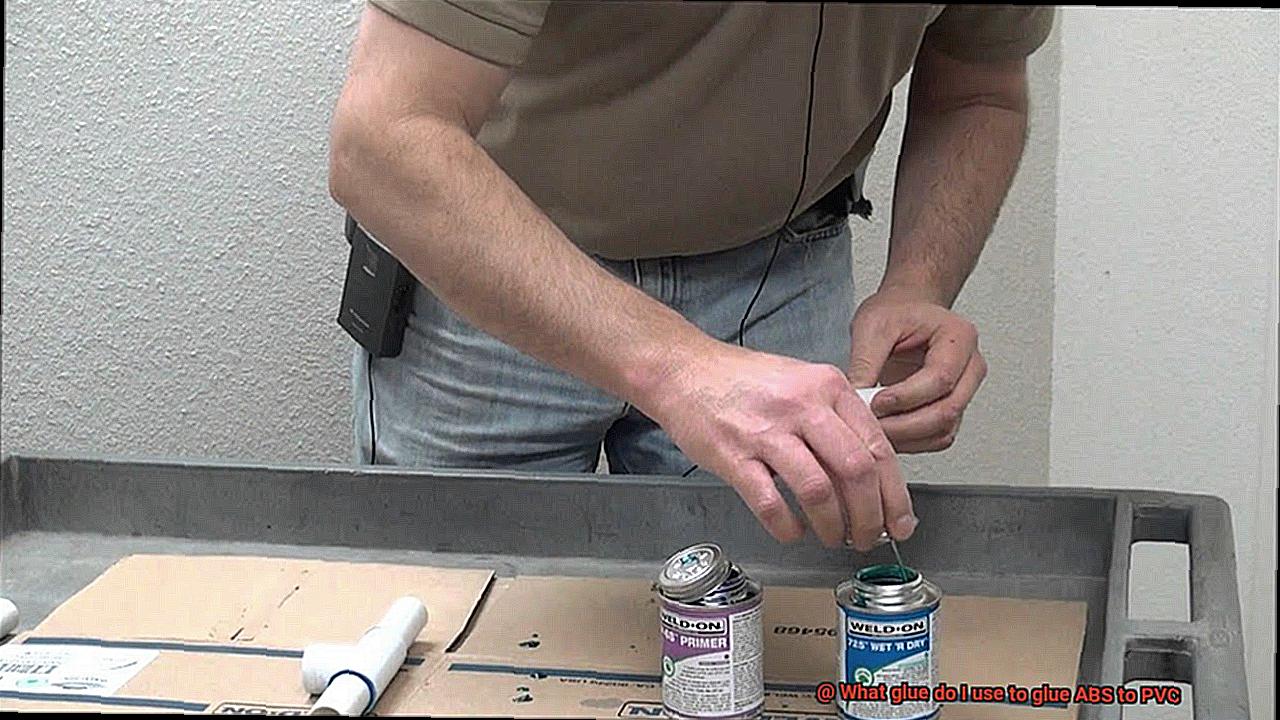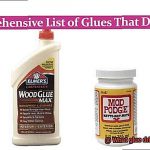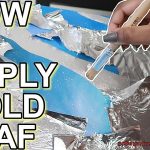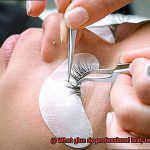Have you ever found yourself scratching your head over seemingly compatible materials that just won’t stick together? ABS and PVC are two such materials that can leave even the most seasoned DIYers feeling stumped. Despite their common use in plumbing and electrical applications, bonding them together can be a real challenge. So, what kind of glue do you need to glue ABS to PVC?
Well, it’s not a one-size-fits-all answer. There are a multitude of adhesives out there that claim to bond ABS to PVC, but not all adhesives are created equal. Some might work well for certain applications, while others may result in a brittle or weak joint. Depending on your specific project needs, you’ll want an adhesive that is strong, durable, and able to withstand exposure to water and chemicals.
Whether you’re undertaking a plumbing project or working on electronics, understanding the properties of each material and how they interact with different adhesives is crucial. With some guidance and know-how, however, selecting the perfect glue for your ABS-PVC bonding needs is totally achievable. So let’s dive into the details and get started on creating long-lasting bonds between these two materials.
Solvent-Based Adhesives: Pros and Cons
Contents
- 1 Solvent-Based Adhesives: Pros and Cons
- 2 Epoxy: Pros and Cons
- 3 Cyanoacrylate (Super Glue): Pros and Cons
- 4 Factors to Consider When Choosing an Adhesive for ABS to PVC Bonding
- 5 Health Hazards Associated with Solvent-Based Adhesives
- 6 Tips for Working with Epoxy
- 7 Tips for Working with Cyanoacrylate (Super Glue)
- 8 Conclusion
When it comes to bonding ABS to PVC, solvent-based adhesives are a popular choice due to their specific design for working with these types of plastics. These adhesives contain solvents that dissolve the surface of the plastic, allowing them to fuse together when the solvent evaporates. However, before deciding on solvent-based adhesives, it’s important to weigh their pros and cons.
On the plus side, these adhesives offer a strong bonding strength that can create a permanent bond between ABS and PVC that’s resistant to water, chemicals, and heat. They’re also easy to apply and can be used on irregularly shaped surfaces. Additionally, solvent-based adhesives are versatile and can bond a variety of materials besides ABS and PVC, including metal, wood, and rubber.
However, there are some drawbacks to consider as well. Solvent-based adhesives have high toxicity levels due to the volatile organic compounds (VOCs) they contain. This can be harmful if inhaled or ingested, so it’s crucial to use these adhesives in a well-ventilated area and wear protective equipment such as gloves and masks.
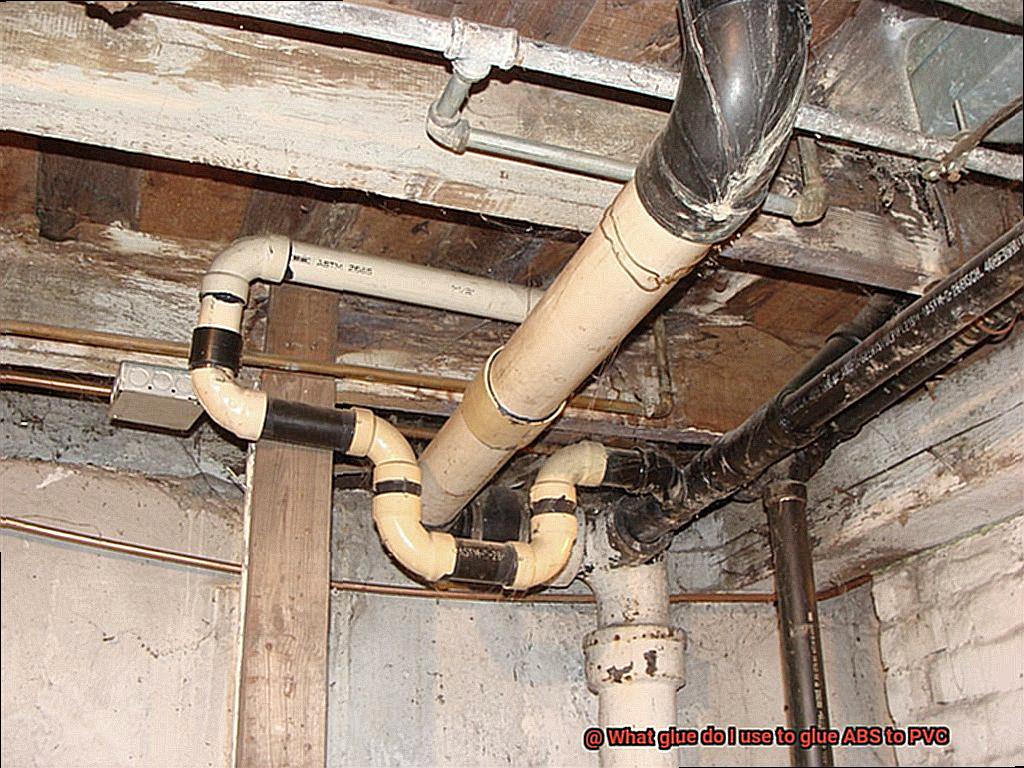
Another downside is their long curing time. It can take several hours or even days for the adhesive to fully cure, which can slow down the bonding process. Furthermore, once the adhesive has cured, it can be difficult to remove, making it challenging to make any adjustments or repairs.
Epoxy: Pros and Cons
If you’re searching for a strong adhesive to bond ABS to PVC, epoxy could be the solution you’ve been looking for. This two-part adhesive is renowned for its versatility and robust bonding properties. However, before you commit to using epoxy, it’s important to weigh up the pros and cons.
Firstly, let’s look at the positives. Epoxy creates an extremely durable bond that is resistant to impact and vibration. This is particularly useful for materials that will be under stress or movement. Moreover, epoxy has the ability to fill gaps, creating a smooth and even bond. This feature can be a lifesaver when working with materials that don’t fit together perfectly.
Despite these advantages, there are some potential drawbacks to consider. One of the biggest concerns is the sensitivity of epoxy to UV light. If exposed to sunlight, epoxy can become brittle and yellow over time, which can weaken the strength and durability of the bond. To counteract this issue, additional measures may be necessary to protect the bond from UV exposure.
Another potential issue is shrinkage during the curing process. If too much epoxy is applied or if it is applied unevenly, it can shrink as it dries. This shrinkage can cause the bond to weaken or even fail.
In summary, while epoxy can offer an effective bonding solution for ABS and PVC, it’s important to be aware of both its pros and cons. With careful consideration and proper application techniques, you can maximize the benefits of this adhesive while minimizing any potential issues.
Cyanoacrylate (Super Glue): Pros and Cons
When it comes to adhesives, cyanoacrylate, or super glue, is a popular choice for bonding ABS to PVC. But before diving in, it’s important to weigh the pros and cons of using this fast-drying adhesive.
Let’s start with the pros:
- Quick-drying time: One of the biggest advantages of cyanoacrylate is its lightning-fast drying time. In mere seconds or minutes, your project can be complete.
- Easy to use: Applying super glue is a breeze. Simply apply a small amount to the surface you want to bond, press the two pieces together, and voila. A strong bond is formed.
- Ideal for intricate projects: Due to its ability to work well on smaller parts or joints, cyanoacrylate is perfect for intricate projects that require precision.
However, there are some cons to consider:
- Brittleness: Once fully cured, cyanoacrylate can become brittle. This means it may not be the best choice for applications that will be subjected to stress or impact.
- Ineffective for larger surface areas: Super glue may not be effective for bonding larger surface areas due to its better performance on smaller parts or joints.
- Potential toxicity: It’s important to note that cyanoacrylate fumes can be harmful if inhaled and skin irritation or burns can occur upon contact. Protective gear like gloves and goggles should always be worn when using this adhesive in a well-ventilated area.
Factors to Consider When Choosing an Adhesive for ABS to PVC Bonding
The right glue is crucial for a long-lasting and durable bond. To make sure you choose the best adhesive for your needs, here are some essential factors to consider when selecting an adhesive for ABS to PVC bonding.
First and foremost, chemical compatibility is key. It’s critical to select an adhesive that is specifically designed to work with these two materials. Some adhesives may not bond well with certain plastics, so be sure to read the label carefully before making a purchase.
Another critical factor to consider is the required strength of the bond. Depending on the application, some bonds may need to withstand heavy loads or vibrations, while others may only need to hold lightweight objects in place. Choosing an adhesive with the appropriate strength ensures a long-lasting and durable bond.
Temperature resistance is also crucial when selecting an adhesive for ABS to PVC bonding. Depending on the application, the bonded materials may be exposed to high or low temperatures. It’s vital to choose an adhesive that can withstand these temperature extremes without losing its bonding strength.
In addition, the drying time of the adhesive is another important consideration. Some adhesives take longer to dry than others, which can impact the overall production time of a project. Choosing an adhesive that dries quickly while still providing a strong and durable bond will save you both time and money.
Last but not least, ease of use should also be considered when selecting an adhesive for ABS to PVC bonding. Some adhesives require special equipment or techniques to apply, while others are more straightforward and can be applied with a brush or applicator. Choosing an adhesive that is easy to use can help ensure a successful and stress-free bonding process.
Health Hazards Associated with Solvent-Based Adhesives
While solvent-based adhesives are a go-to option for many DIYers, it’s important to be aware of the potential health hazards associated with them.
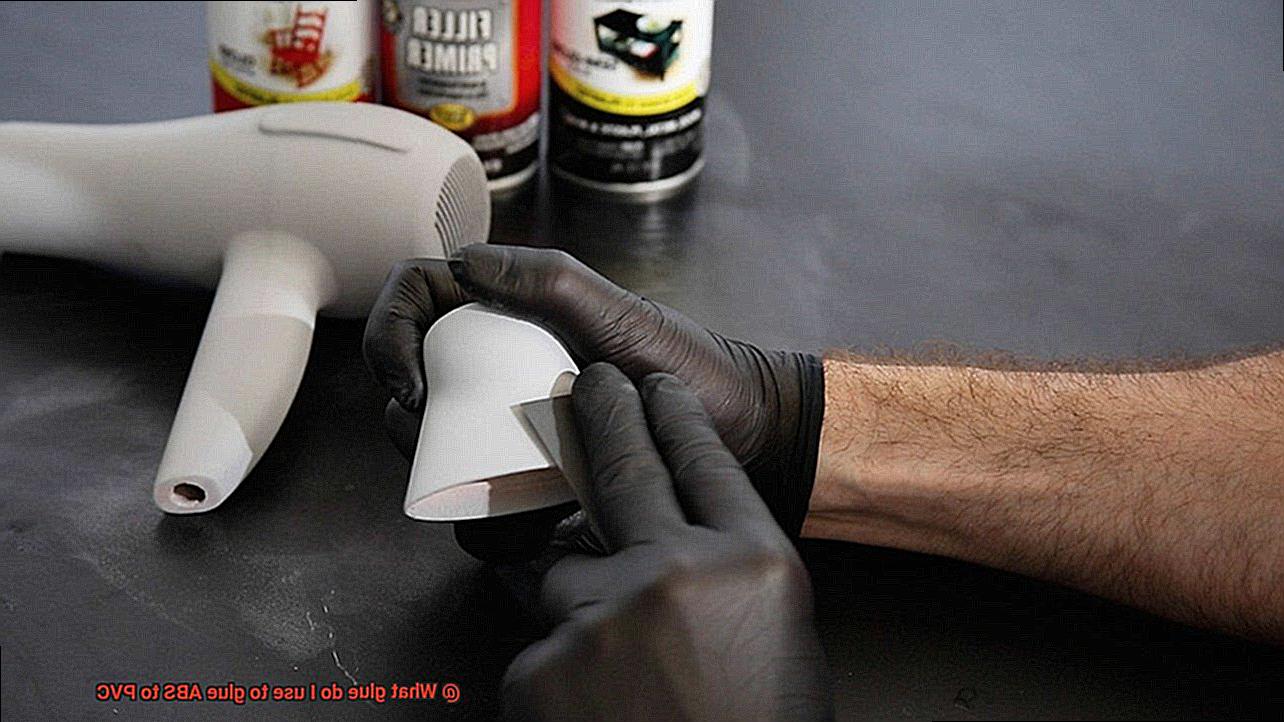
Solvent-based adhesives contain volatile organic compounds (VOCs), which can have harmful effects on your health if inhaled or absorbed through the skin. Prolonged exposure to VOCs has been linked to respiratory problems, headaches, nausea, and even cancer. Therefore, it’s crucial to take precautions when working with these adhesives.
To minimize your exposure to these dangerous chemicals, ensure that you work in a well-ventilated space and wear protective equipment such as gloves and a respirator mask. It’s also essential to follow the manufacturer’s instructions carefully and dispose of any unused adhesive and containers properly.
If possible, consider using alternative adhesive options such as water-based or epoxy adhesives. These alternatives have fewer VOCs and are safer for both you and the environment.
Tips for Working with Epoxy
Gluing ABS to PVC can be a daunting task, but using epoxy can make the job much easier. However, it’s important to follow some guidelines to ensure the bond is strong and long-lasting.
Proper Surface Preparation
Before applying the epoxy, it’s important to clean the surfaces thoroughly. Any dirt, grease, or other contaminants can affect the strength of the bond. Use a degreaser or rubbing alcohol to clean the surfaces and let them dry completely before applying the epoxy. Sanding the surfaces with fine grit sandpaper can also help create a rougher texture for better adhesion.
Accurate Mixing
Mixing the epoxy correctly is crucial for a successful bond. Follow the manufacturer’s instructions carefully and use a small container to mix equal parts of resin and hardener thoroughly for several minutes. Take care not to introduce air bubbles while stirring.
Careful Application
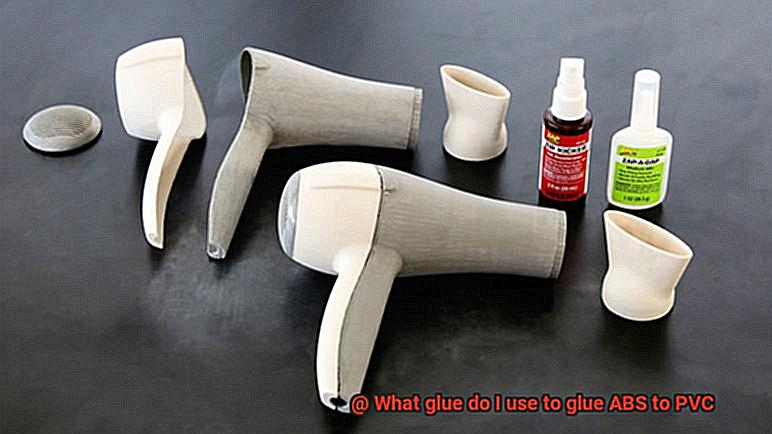
When applying the epoxy, use a disposable brush or spreader to apply a thin layer to both surfaces. Be sure to apply enough epoxy to cover the entire surface, but not so much that it drips or runs. Press the surfaces together firmly and hold them in place for several minutes until the epoxy begins to set. Avoid disturbing the bond during this time.
Patience During Curing
After applying the epoxy, allow it to cure fully before handling or using the bonded materials. This can take anywhere from several hours to overnight depending on the specific product used. Avoid touching or disturbing the bond during this time.
Attention to Detail
To achieve a successful bond with epoxy, attention to detail is crucial. Take your time and follow all guidelines carefully. Don’t rush through any step of the process as it can affect the strength and durability of the bond.
Tips for Working with Cyanoacrylate (Super Glue)
Working with cyanoacrylate, commonly known as super glue, can be a tricky task, especially when bonding ABS to PVC. While this combination may not provide the strongest bond, there are still some tips that can help achieve a successful bond.
Clean and Dry Surfaces
When working with super glue, it’s essential to clean and dry the surfaces thoroughly before applying the adhesive. Any dirt, oil, or moisture on the surfaces can affect the adhesive’s ability to bond properly. Using acetone or rubbing alcohol to clean the surfaces is recommended, and it’s essential to let them dry completely before applying the glue.
Apply Glue Sparingly and Precisely
Super glue dries quickly and does not allow for any adjustments once applied. Therefore, it’s crucial to apply it sparingly and precisely only where needed. Using too much glue can actually weaken the bond rather than strengthening it. A toothpick or a small brush can be used for precise application.
Clamp or Apply Pressure
After applying the glue, apply pressure with a clamp or your hands for a few minutes to hold the two surfaces together while the glue dries. This step is crucial in ensuring a strong bond that will not break apart easily.
Allow Enough Time for Drying
Patience is key when working with super glue since it takes time to dry completely. It may take up to 24 hours for the bond to fully set and cure. Therefore, avoid touching or moving the bonded materials during this time.
Consider a Specialized Adhesive
While super glue can be used for bonding ABS to PVC, it may not provide a strong enough bond for this material combination. It’s essential to consider using a specialized adhesive designed specifically for bonding ABS and PVC together for a stronger and more reliable bond.
deJ8PYPyR60″ >
Conclusion
In the end, successfully bonding ABS to PVC requires a bit of know-how and the right adhesive. With a plethora of options out there, it can be daunting to choose the best one for your needs. But fear not. By considering factors such as chemical compatibility, required strength, temperature resistance, drying time, and ease of use, you’ll be well on your way to selecting the perfect adhesive.
Solvent-based adhesives are a popular choice due to their strength and durability. However, they require proper ventilation and safety precautions due to their potential health hazards. Epoxy is another strong option but can be sensitive to UV light and may shrink during the curing process. On the other hand, cyanoacrylate (super glue) is easy to use but requires precision application and clamping or pressure while drying.
No matter which adhesive you choose, proper surface preparation is key for ensuring a lasting bond between ABS and PVC. And remember: safety always comes first when working with any type of adhesive. Protect yourself by wearing gloves and goggles in a well-ventilated space.
So go ahead and tackle that tricky ABS-to-PVC project with confidence.

